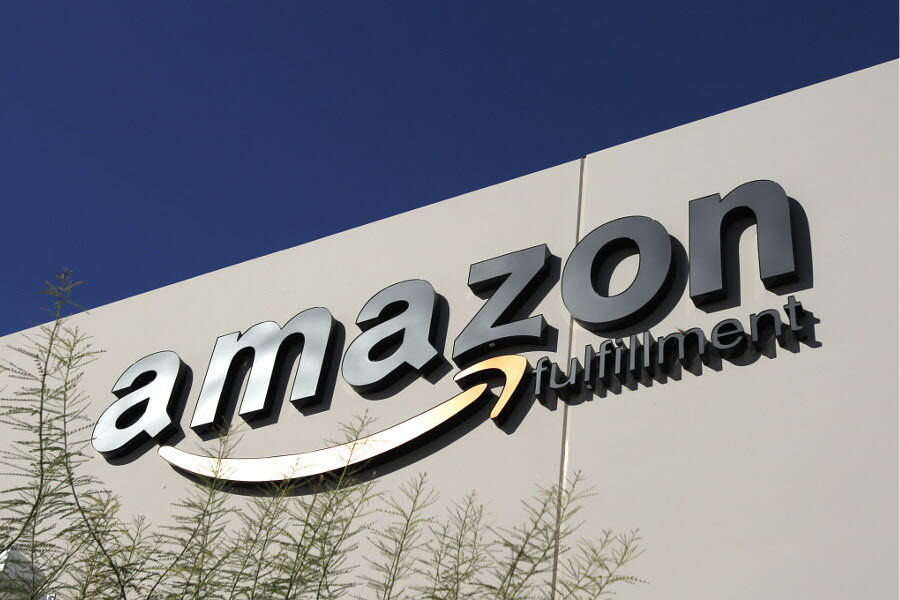Amazon Prime Day vs. Wal-Mart: Who wins the online price wars?
It's been called "an online retail battle for the ages," "a cyber smackdown," and "an epic mid-summer sales rumble."
On Wednesday, Amazon and Wal-Mart are going head-to-head in a massive deal-duel showdown that's as much about offering shoppers massive mid-summer discounts as it is about winning new customers.
On one side of the ring is Amazon, which heavily promoted Wednesday's "Prime Day" as offering better deals than Black Friday. The shopping event, which is designed to commemorate Amazon's 20th anniversary, is aimed at Prime members, who pay a $99 annual fee for free shipping.
Not to be outdone, Wal-Mart is taking jabs at Amazon with a sale of its own.
"We've heard some retailers are charging $100 to get access to a sale," Fernando Madeira, president and CEO of walmart.com, wrote in a blog post. "But the idea of asking customers to pay extra in order to save money just doesn't add up for us."
He added, "We're kicking off some awesome deals this week that will be available for everybody with no hidden costs or admission fees, and they won't be available for just one day."
Wal-Mart said its "rollback prices" will last for 90 days, and the minimum purchase cost for free shipping has dropped from $50 to $35, matching Amazon.
The online giant shot back just hours after Wal-Mart's statement. "We've heard some retailers are charging higher prices for items in their physical stores than they do for the same items online," Greg Greeley, vice president of Amazon Prime, said in a statement.
"The idea of charging your in-store customers more than your online customers doesn't add up for us," he added, "but it's a good reminder that you're usually better off shopping online."
The two massive retailers – one a bricks and mortar giant, the other an online behemoth – are locked in a battle to win online shoppers, the fastest-growing retail segment in coming years, according to market research firm Nielsen.
While Wal-Mart, the world’s largest retailer, made a cool $485.7 billion last fiscal year, its online sales were paltry at $12.2 billion. Amazon, the undisputed online champion, took in nearly $89 billion in online sales.
Wal-Mart has said it is investing $1.2 billion this year into improving digital sales, and its duel with Amazon is proof that the Bentonville, Ark.-based chain is serious about stepping up its online game.
As part of that, Wal-Mart is offering a Prime-like free shipping service this summer, called ShippingPass, where those spending at least $50 get free unlimited three-day shipping. (The minimum purchase will be reduced to $35 during Wal-Mart's sale event.) Wal-Mart also already offers a free "ship to store" option, where you can buy online and pick up the item at the closest Wal-Mart brick-and-mortar store.
So who wins the online showdown?
Amazon, by a long shot, say retail analysts.
"Amazon decided to celebrate its 20th anniversary, and Wal-Mart decided to make it a bigger deal by also celebrating [Amazon's] 20th anniversary," consultant Stephen Beck told NPR.
Wal-Mart, which Mr. Beck called an "older, slower competitor," is still learning the ropes and making mistakes. For example, it has long bragged that its "everyday low prices" replace gimmick, short-lived sales – but it appears to be engaging in exactly one of those now.
What's more, Wal-Mart's CEO made fun of Amazon for "asking customers to pay extra in order to save money," a shot at its Prime membership, which Walmart is now mimicking with its own Shipping Pass program.
Of course, once customers spend nearly $100 to join Prime, they're also less likely to spend their money on other sites, like walmart.com, which may further undercut Wal-Mart's sales.
And it turns out Amazon's Prime Day deals are actually, as it advertised, mostly better than last year's Black Friday sales, according to analysts.
That said, a recent study by Wells Fargo that tracked 100,000 products over the last year sold by Amazon, Wal-Mart, and Target, found that the items were 10 percent cheaper on average at Wal-Mart, compared to Amazon.
Early reports suggest that Amazon's much-hyped Prime Day may not be living up to expectations. Unhappy Amazon shoppers are taking to social media to vent, saying the event is "like a bad garage sale" with a seemingly random assortment of deals, and likening it more to April Fools' Day than to Black Friday.
Whoever comes out on top in Wednesday's online price wars – Amazon, Wal-Mart, or even Target or Best Buy, which decided to get in on the action with sales of their own – customers stand to win all around with lower prices.







